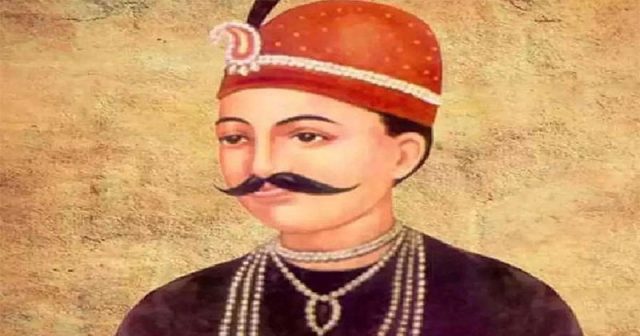
Tantia Tope was one of the most significant leaders of the Indian Revolt of 1857. Even without formal military training, he came out as one of the most capable generals of the rebel forces. He was the right-hand man of Nana Saheb during the Cawnpore revolt.
He helped Rani Lakshmi Bai of Jhansi, his childhood friend, fight the British forces. The two later joined hands and captured the fortress city of Gwalior. After suffering defeat in Gwalior, in which Rani Lakshmi Bai attained martyrdom, he adopted guerrilla warfare and evaded a direct fight with the British
For nearly a year, the British forces, led by their most capable generals, chased him incessantly. however, they could not capture him. Finally, a betrayal by a close aid led to his arrest. This was followed by a hurried military trial and his execution. His descendants, however, claim that he died while fighting a battle a few months before.
Tantia Tope was born as Ramchandra Panduranga Yawalkar in Yeola, Nashik, in 1814 to Pandurang Rao Tope and Rukhmabai. He belonged to the Maratha Vashista Brahman family.
His father was a prominent noble at the exiled Peshwa Baji Rao Il court in Bithoor. Tantia Tope became a close friend of Peshwa’s adopted son, Nana Dhondu Pant, also known as Nana Saheb His other friends include Rao Saheb and Rani Lakshmi Bai. Tantia was his nickname since childhood, and it means General and Tope was a title given to him later. It means ‘commanding officer.
Tantia Tope turned against the British when the latter deprived Nana Saheb of his father’s pension because he was not a natural-born heir of Peshwa Baji Rao II. During the Kanpur revolt, Nana Saheb assumed the position of rebel leader and, later, after the surrender of the British forces, on June 25. 1857, became the Peshwa. Tantia Tope was his commander-in-chief. General Havelock managed to defeat Nana Saheb and recapture Cawnpore in mid-July 1857.
By late November. Tantia Tope gathered an army, mainly from the Gwalior contingent, and took back Cawnpore from General Charles Ash Windham. However, in December of the same year, he was defeated by Sir Colin Campbell and had to retreat to Kalpi
In March 1858, he came to the aid of Rani Lakshmi Bai of Jhansi, who was attacked by the British forces led by Sir Hugh Rose. After being defeated by the latter, he helped Rani Lakshmi Bai to escape Jhansi and welcomed her in Kalpi. When Kalpi was taken over by the British, Rani Lakshmibai, Tantia, and Rao Saheb moved to Gwalior.
Tantia Tope convinced the soldiers of Gwalior to join the movement, and the ruler of the city had to flee. They took charge of the Gwalior Fort, declaring Hindavi Swaraj (Free Kingdorn). The rebels announced Nana Saheb as their Peshwa.
In the ensuing battle with the British under General Rose, Rani Lakshmi Bai became a martyr (17 June 1858) while the rest escaped for the Rajputana. After the defeat of Gwalior. Tantia Tope adopted the famous strategy of guerrilla warfare over an expansive region of Central India, Malwa, Bundelkhand, Rajputana and Khandesh.
This caused the British a lot of trouble. He intended to cross the Narmada River, go down south, and generate popular support from the rulers and people in the name of the Peshwa. The British never wanted this to happen.
Under the command of Col Holmes. General Roberts, and General Michel, the British forces pursued and attacked him at numerous places, but every time he got away successfully.
In many regions, he convinced minor rulers to back the revolt. At other places, he defeated and charged them fines. Due to this, he was able to gather an army. The British chased him for about 2800 miles across hills, valleys and forests but failed to capture him every single time.
The British finally captured Tantia Tope in April 1859 after the Raja of Narwar, Man Singh. betrayed him. In exchange for protection for himself and his family, the latter handed Tantia Tope to the British.
He was tried in a military court where he refused to accept any role in British civilian massacres. He also challenged the sedition charges declaring that his master was Nana Saheb and not the British. He was executed at Shivpuri. Madhya Pradesh, on April 18, 1859 in front of thousands of people.
Courtesy : ORGAISER














